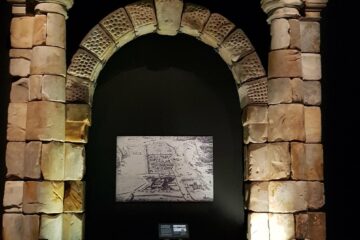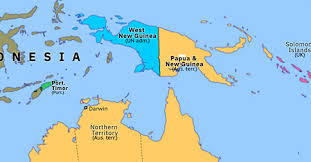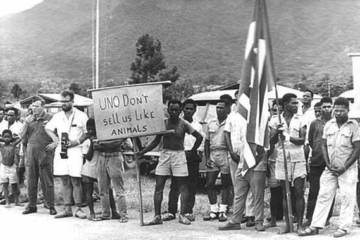The Headquarters of the Dutch East Indies Armed Forces was together with the Onderbevelhebber Srijdkrachten in het Oosten – OBSO (Deputy Commander of the Forces in the East) in charge of the construction of the ML (Army Airforce) (for the time being only 18 Squadron). She had to coordinate with various Allied headquarters and agencies and ultimately had to defend her own interests with the Australian government and the Allied commanders. It was also in direct contact with the Dutch military representatives at the Combined Chiefs of Staff (CCOS) and the Netherlands Purchasing Commission (NPC) in Washington. From the beginning of the Australian period, the HK-KNIL was based in Melbourne. The reason for this was in all probability the fact that the headquarters and the Central War Room of the RAAF, and also the headquarters of the Allied forces were located in Melbourne.
However, the latter headquarters was moved to Brisbane by order of MacArthur in July 1942 due to his change in military policy. He changed the strategy from defensive to offensive, wishing to be closer to his troops.
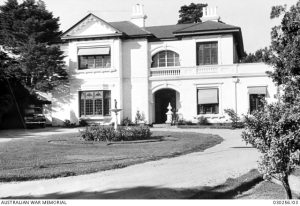
The HK-KNIL was housed in building No. 411 on St. Kilda Road. It remained there until the end of the war. Exactly how the correct occupation of the ML part of this headquarters was in this early period can no longer be determined with certainty. There were no corps orders during this period and orders were not made at that time. However, the chief and chief officers who arrived in Australia, who were given a leadership position, can form a picture of the functioning of the headquarters in the first months and who in fact took charge.
Key officials at the headquarters in Melbourne
a. Rear Admiral F.W. Coster, already retired, was appointed by the Minister of the Navy, also commander of naval forces, just before the capitulation as deputy commander of the armed forces in the Far East (OBSO) and naval commander Australia (Navy Commander Australia – MCA). He held the OBSO position until March 1943, when, after a break of several months (March and April 1942), he was relieved by Rear Admiral P. Koenraad;
b. Major General L.H. van Oyen arrived in Australia on 8 March 1942 and was shortly afterwards appointed OBSO by order of ‘London’. The same assignment stated that Coster was ‘attached to’ Van Oyen, who retained this position until he left for America in April 1942 to take charge of the flight school. Although there is no more correspondence about this, we assume that Coster, after the departure of Van Oyen, again took on the OBSO position until Konrad came;
c. Lieutenant Colonels C. Giebel, J.J. Zomer and Major M. van Haselen went with the flying school to America;
d. Lieutenant Colonel N.L.W. van Straten was commander of the army troops on the island of Timor, when the Netherlands East indies (NEI) capitulated. Until May 25, 1942, he commanded his troops against the advancing Japanese and managed to keep them alive in guerrilla-like warfare under the worst possible conditions. In the meantime, his staff received radio contact with Darwin and he provided the Allied Air Force with information about the enemy in Timor. Through this contact, he was instructed to send an officer to Australia to provide more detailed information on the situation and needs. A flying boat of the Americans managed to land unnoticed at the island and Van Straten himself evacuated to the mainland with an Australian brigadier general. He gave command of his troops to Captain J. Breemouer. Van Straten did not have to return to Timor and was appointed (acting) Army Commander Australia (LCA) because of his seniority. He held this position until Van Oyen was appointed acting LCA in August 1943. The LCA also became commanding officer of the Army Airforce.
The key offices of the KNIL
The HK-KNIL included the staff of the LCA, consisting of an army and an air force part. From the summary data, the Air Force Staff can be described as follows. This consisted of (at least) four offices, namely:
a. flight service. Head of this office was Major B.J. Fiedeldij, assisted by Captain R.E. Jessurun. Soon, on 28 April 1942, Fiedeldij was transferred to 18 Squadron NEI to take command of Captain Boot. Jessurun was also soon transferred to the 18th to take on the training of bomb aimers. After this course he remained with the squadron as the oldest observer. The office of flight service remained devoid of competent officers, until it was not until April 1943 that Major E.J.C. arrived at Roller from America;
b. armament. Major of artillery F.B. Kroese was appointed as head; captain F. den Ouden was attached to him. Not only after their appointment they were transferred to the RNMFS in America to serve the school with their knowledge of armaments. This office also remained unoccupied indefinitely;
c. technology and equipment matters. The head was Prof. dr.ir. G.J. Otten, who, like his armaments colleague, followed the path to the RNMFS. Again, an adequate replacement was not provided;
d. administration and human resources. The head was Captain J.H. Copes van Hasselt, who was also transferred to the school in America.
The Liaison Officers at the headquarters
Thus, not much remained of the air force part of the HK-KNIL. For the construction of the 18 Squadron, this state of affairs proved to be very frustrating. Furthermore, the headquarters had a number of liaison officers (Lo) at various staffs:
a. Lieutenant Colonel J.M.R. Sandberg (General Staff Officer), an Army officer, was appointed LO, at allied air force headquarters in Brisbane;
b. Major R. Roos became Lo at HQ RAAF in Melbourne and was also in charge of general staff work at the HK-KNIL;
C. Major A.L.A. Coppens acted as acting LO at the headquarters of the Allied Air Force until he was transferred to England on 20 June 1942;
d. captain H.J. de Vries (army) became LO at the OBSO and at the headquarters of the Allied air force;
e. Captain W. Boot, after his failed policy as commander of the 18th, was employed at the Allied headquarters to take the place of Major Coppens.
Communication problems and egos hampered the operations in Australia.
Finally, some conclusions about these first six months in Australia, a period in which decisions were made that proved to be of far-reaching significance for the ‘new’ ML — so far-reaching that they even influenced military aviation in the post-war period. There was, first of all, the poor communication between ministers of the Netherlands Government-in-Exile in London and the many commanding authorities in America, Australia and Ceylon, creating an atmosphere of mistrust and misunderstanding. There were contradictions and there was a certain competency struggle, among other things, in the demand for aircraft, the relocation of the flight school, the deployment of personnel and other important matters. Fortunately, many things that were in danger of going wrong were managed by a lot of initiative and perseverance from others. However, what could have functioned much better was the set-up and occupation of the air force part of the HK-KNIL, in Australia. Due to the poor staffing — often caused by Van Oyen himself — the only KNIL component that had the opportunity to operate operationally under its own flag after a short, thorough training course, has more or less been the victim of this mismanagement. Why so many capable, older officers had to go to America remains a mystery. It is our opinion that Van Oyen could handle the training with less; after all, he got all the cooperation from the Americans.
Due to the appalling understaffing of the LCA’s staff in the field of aviation, a vacuum arose between the squadron, which was in its ‘growth period’, and the officials who set policy at the Australian and American staffs. As a result, a lot of setbacks had to be suffered in the equipment, personnel, training in Australia and organisation sectors, which ultimately had an impact on the readiness of the squadron. The LCA could not be expected, as an army officer in charge of everything, to master, let alone feel, the problems of the ML under construction within a period of two to three months. All the more so since lieutenant-colonel Van Straten concentrated precisely during this period on his troops that he left behind on the island of Timor, the guerrilla war in the Great East and other ‘full-blooded’ army subjects. On top of that, his closest associates and advisers were foreign Army officers. It was a solitary mission that the commander of 18 Squadron NEI had to accomplish.
Move to Brisbane – 1944
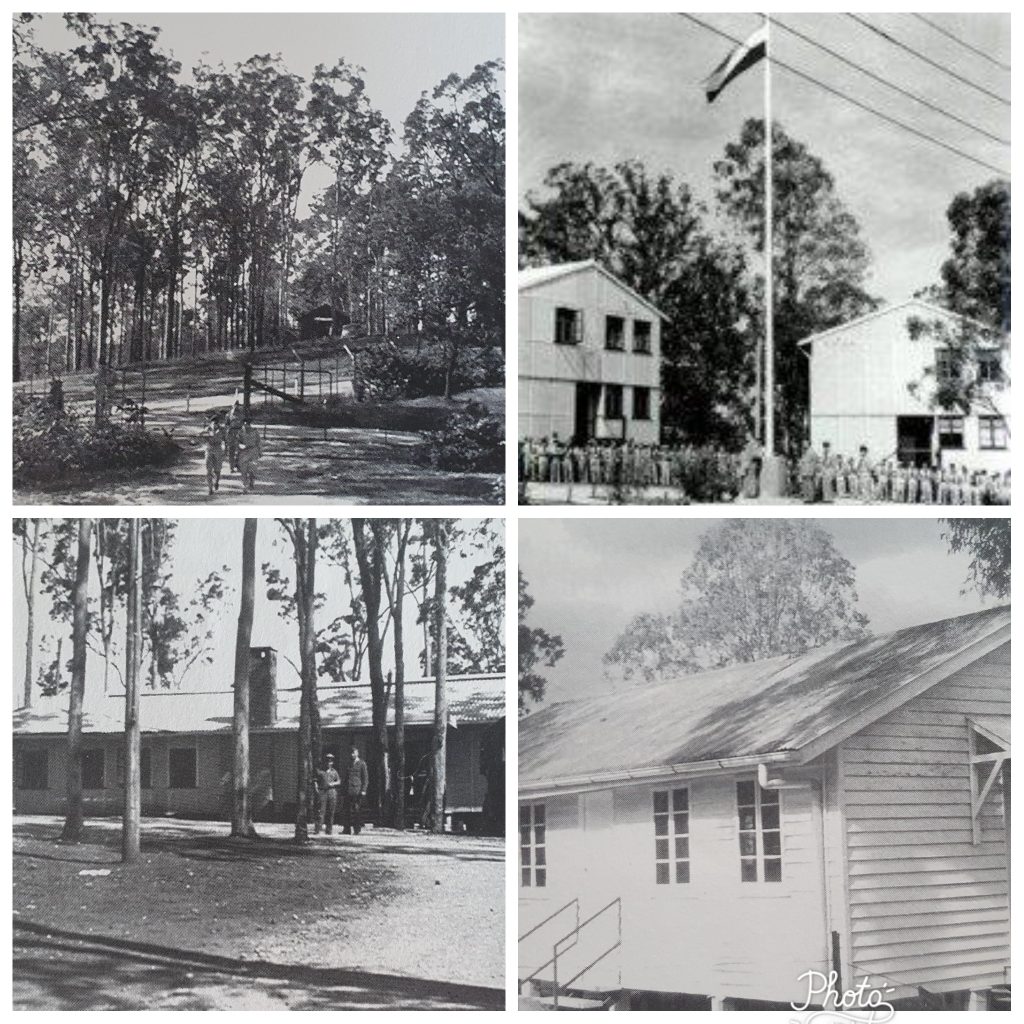
The Headquarters of the Dutch East Indies Armed Forces (HK-KNIL) and other military units were moved from Melbourne to Camp Columbia in Brisbane in 1944. This happened in preparation of the declaration by Queen Wilhelmina of the Netherlands to establish the Netherlands East Indies Government-in-Exile in 1944. The Netherlands Government-in-Exile based in London had decided to start the preparations for reestablishing Dutch rule in Netherlands East Indies. Brisbane was closer to the NEI and Camp Columbia, which was established by the Americans in 1942, had been vacated by them when they moved their headquarters to Hollandia in Dutch New Guinea in June 1944.
In that same month, the Dutch began refurbishing Camp Columbia. The NEI Labour Battalion, brought from Casino, NSW, was assigned the task of improving the camp. Led by Dutch and Indonesian officers, this battalion of Indonesians constructed new office buildings, club facilities, a laundry, and added showers and toilets to the accommodation huts.
The Australian Government, following advice from US authorities, made the unusual decision not to charge the Dutch for the lease of the site under a Reciprocal Lend-Lease arrangement.
The NEI Government-in-Exile was a continuation of the Netherlands East Indies Commission for Australia and New Zealand. After the reorganisation the new body consisted of seven departments headed by directors, along with Van Mook, who formed the Legislative Council. The directors were appointed on 12 April 1944, with various individuals assigned to departments such as the Interior, Justice, Finance, Education, Public Works, Department of War, and Economic Affairs. They held multiple meetings before reconvening at Camp Columbia on 23 August. The NEI Commission officially closed on 3 November 1944.
Dutch military units relocated to Brisbane to serve the NEI Government-in-Exile.
A Women’s Army Corps resided in Wacol but trained at Yeronga Park. NEFIS (Netherlands Forces Intelligence Service) moved its staff and files from Melbourne using a special train provided by the Commonwealth. NEFIS leased offices in the New Zealand Insurance Building and the NEI Army Air Corps leased offices in the Courier Building in the CBD. Hotel Mornington housed Dutch aircrew, and Archerfield aerodrome had 16 Dutch Dakota aircraft concentrated there. The Dutch also rented the Pacific Private Hotel in Fortitude Valley since November 1942 for use as a hotel or canteen for Dutch military personnel. Additionally, they were allotted two small warehouses at the US supply base of Camp Meeandah in Pinkenba. These sites were chosen for their transportation links to Camp Columbia, with Archerfield, Pinkenba, Fortitude Valley, and the CBD connected to Wacol by rail.
In all about 1,500 Dutch East Indies military personnel moved to Camp Columbia.
Main Source: De Militaire Luchtvaart van het KNIL in de jaren 1942-1945
